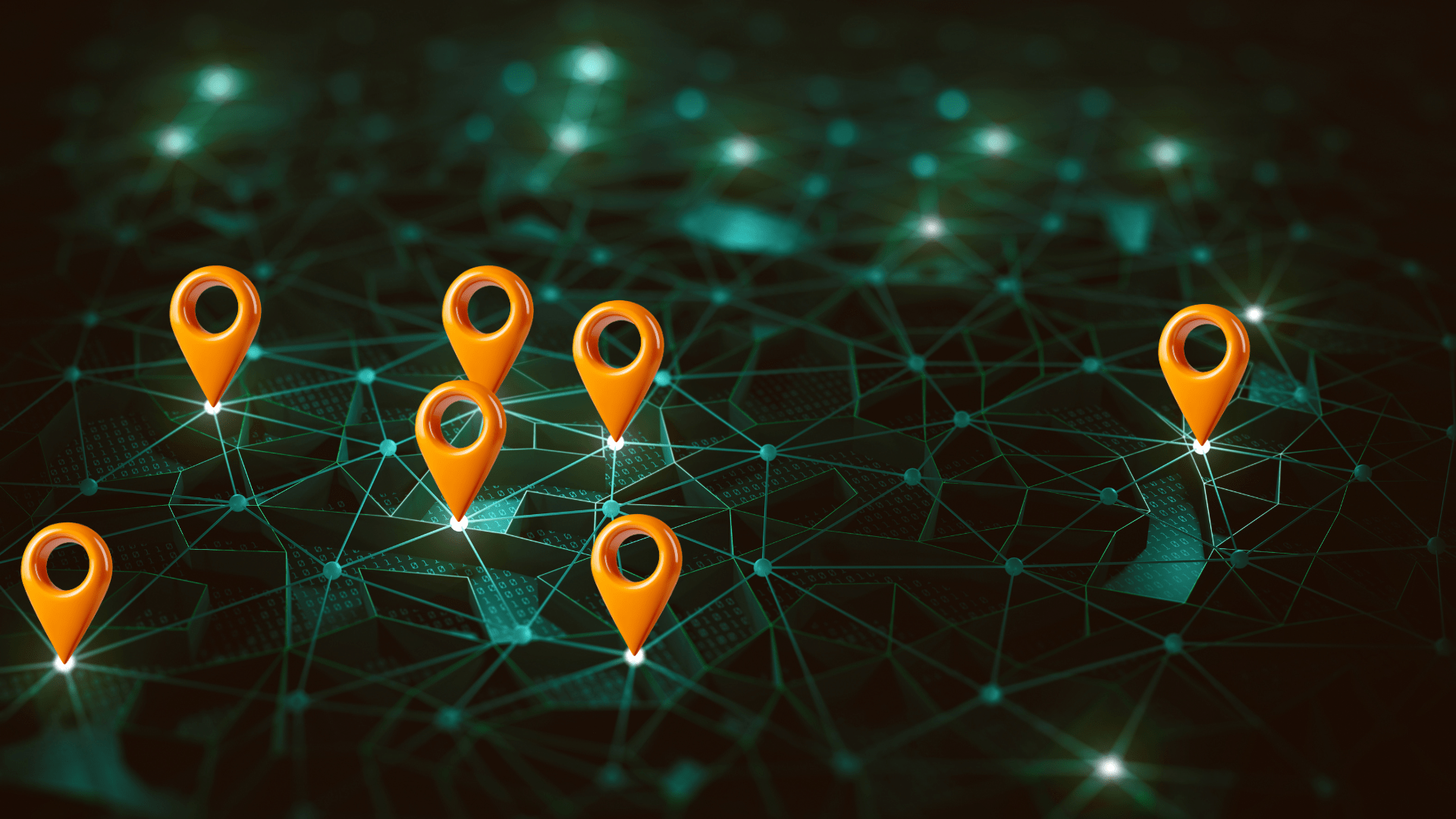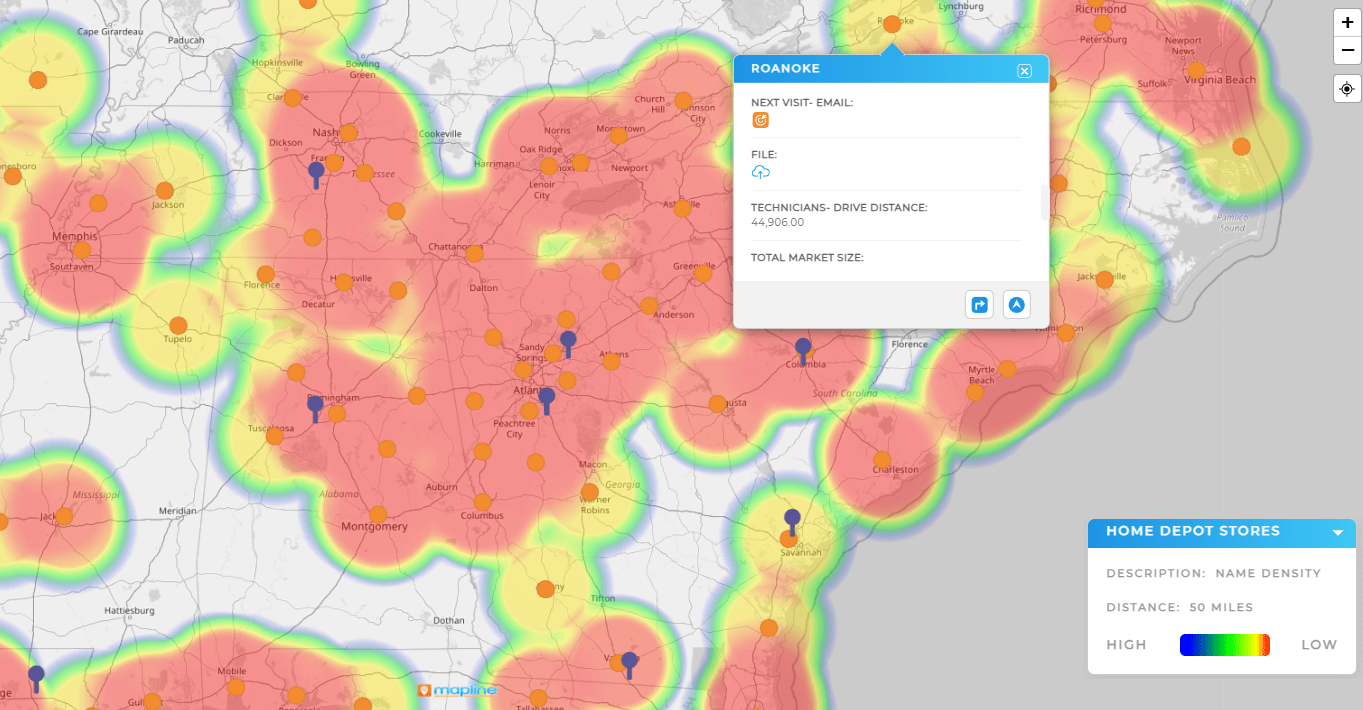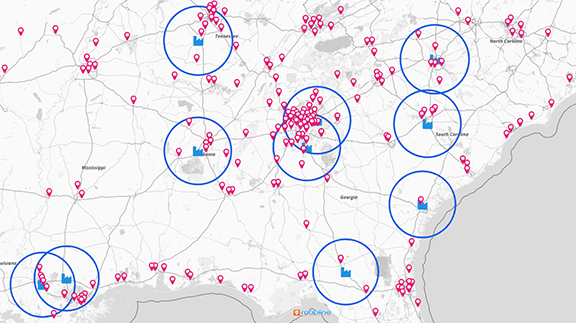- Blog
- Geo Scheduling
- The Future of Geographic Intelligence: Why Every Enterprise Needs It Now
Geographic intelligence is becoming more and more relevant every day. Enterprises today compete in an environment defined by speed, precision, and customer expectations. Traditional data tools often fall short when it comes to answering the question of “where” — where customers live, where supply chains break down, where new opportunities lie. Location intelligence fills this gap by combining geographic data with business analytics, creating insights that drive smarter decisions. From customer location analysis to site selection analysis, enterprises across industries are embracing these tools to optimize operations, improve customer experiences, and unlock new growth opportunities.
What Is Geographic Intelligence?
Geographic intelligence, or location intelligence, is the process of deriving insights from geographic data to solve business challenges. It goes beyond simple maps by integrating location analytics, demographic data, and performance metrics into one platform. Paired with location intelligence software or a location intelligence platform, organizations can visualize patterns, identify gaps, and uncover opportunities they wouldn’t otherwise see. Whether for customer location analysis, site selection analysis, or supply chain optimization, the applications are nearly limitless.


Pro Tip: Don’t limit your analysis to spreadsheets. Mapline’s location intelligence combines location intelligence with data visualization, routing, and territory mapping, giving enterprises the insights they need to scale smarter and faster.
Why Geo-Intelligence Matters More Than Ever
The digital economy runs on data, but without spatial context, insights remain incomplete. Location based intelligence adds the “where” factor to traditional business metrics. For enterprises, this can mean discovering untapped markets, designing better delivery routes, or tailoring campaigns to regional preferences. With advances in location analytics software, companies can now layer in real-time data, track customer movement, and adapt strategies faster than ever before. In a world where every mile and every minute matters, ignoring spatial intelligence is no longer an option.
Key Applications of Geographic Intelligence
Enterprises across industries are already using location business intelligence to solve challenges that spreadsheets and static reports can’t touch. By layering geographic data with business metrics, organizations gain a new lens for identifying patterns, inefficiencies, and opportunities. Geographic intelligence makes it possible to optimize sales territories, cut logistics costs, and understand customer behavior at a granular level. These insights also support smarter expansion planning, helping companies know where to open new stores, deploy field teams, or adjust service coverage. Whether it’s streamlining operations or driving growth, location intelligence turns location data into a strategic asset that improves both agility and profitability.
Customer Location Analysis
Understanding where customers are — and how they behave in different regions — is central to growth. Customer location analysis enables businesses to segment audiences, tailor campaigns, and allocate resources more effectively.

Site Selection Analysis
Expanding into a new market? Site selection analysis combines demographic, geographic, and competitive data to identify the most profitable locations for new offices, stores, or warehouses. The result is smarter expansion with lower risk.

Supply Chain Optimization
Disruptions in supply chains often have a geographic root cause. By using location intelligence software to visualize supply chains, enterprises can identify bottlenecks, reduce transit times, and improve resilience against disruptions.

Field Operations Efficiency
For organizations with large field teams, a geographic intelligence platform helps optimize technician routes, balance workloads, and improve response times. This boosts both efficiency and customer satisfaction.

The Future of Location Intelligence
Tomorrow’s leaders won’t just use location intelligence; they’ll rely on it as a strategic advantage. The next wave of innovation will pair location analytics with AI, IoT, and real-time tracking. Imagine dynamic location analytics software that predicts where demand will spike before it happens, or a location intelligence platform that adapts supply chains automatically during disruptions. As spatial data becomes richer and more accessible, enterprises that adopt now will be miles ahead of those who wait.
It’s the use of geographic and spatial data to uncover business insights and improve decision-making.
Location intelligence is the strategy, while location analytics are the tools and methods used to generate insights.
They can optimize supply chains, improve site selection, analyze customer behavior, and streamline field operations.
It adds geographic context to data, helping businesses uncover opportunities and risks that are invisible in spreadsheets.
No. Solutions like Mapline scale to fit small businesses as well as global organizations.
Retail, logistics, utilities, telecom, and healthcare are among the top adopters.









